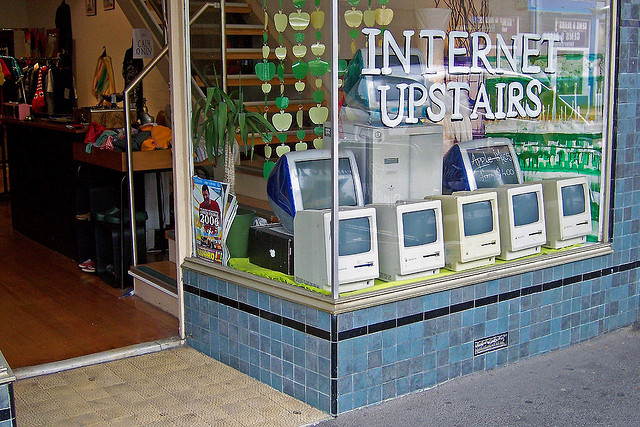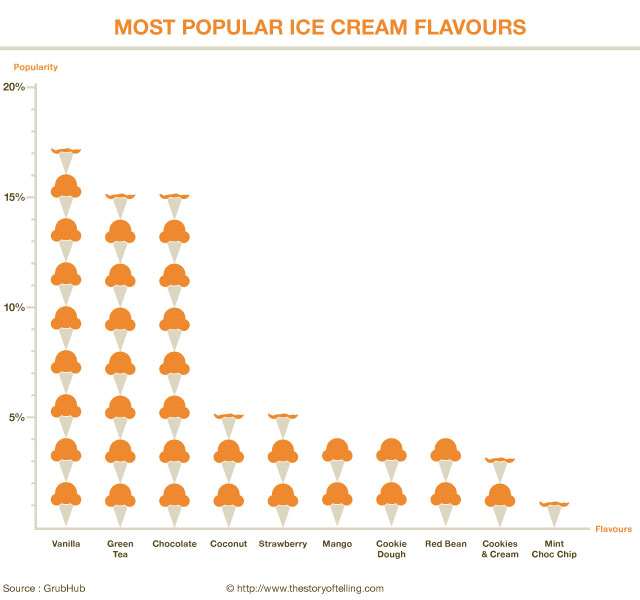Unlock the Magic in Your Story Now
Get the Free 20 questions to Ask Before Launching Your Idea workbook when you sign up for occasional updates.
Get the Free 20 questions to Ask Before Launching Your Idea workbook when you sign up for occasional updates.
Articles filed in: Strategy
Play To Your Strengths
 If you look hard enough at what’s going right (and sometimes wrong) in a business there are always lessons to be learned. Take the story of Tom the decorator who built a great business over many years, then suddenly seemed to lose his way. Part two of that story explains why Tom succeeded in the first place and why things have gone awry of late.
If you look hard enough at what’s going right (and sometimes wrong) in a business there are always lessons to be learned. Take the story of Tom the decorator who built a great business over many years, then suddenly seemed to lose his way. Part two of that story explains why Tom succeeded in the first place and why things have gone awry of late.
While Tom apprenticed as a decorator and knows a lot about colours and paint finishes and surface preparation, he actually doesn’t enjoy the solitary work of painting. Tom is a people person and a terrific salesman. He has a confident, firm handshake, knows how to look people in the eye and has their trust within minutes of meeting. Tom is also a brilliant organiser and manager. He knows how to hire the right man for the job and can give him very clear instructions. Tom has a way of making his team aware of the standard he expects and he commands their respect.
Tom is so good at selling that he has scaled his business rapidly and taken on more staff to do the work he doesn’t enjoy so much (although he never acknowledges this). Tom’s circumstances have changed lately. His cash flow is not what it was because he has just returned from a recent year-long overseas trip, so he’s not hiring a team to help with the jobs he gets during these first few lean months while he builds up his reserves of cash. But Tom is doing his business more harm than good. He is making a short term tactical decision and has abandoned the strategy that has served him so well in the past. Now he’s begun to take shortcuts, to look for quick wins and most important of all he’s stopped playing to his strengths.
Tom’s gift was never that he applied paint better than any other decorator in town. His gift was always that he knew how to make people feel like they mattered. He just didn’t realise that’s what he did for a living.
The irony is that while we spend time on our business goals, working hard to hit targets we set; sometimes we can’t explain how we did it, why it worked or how we really contributed to making it all happen. It’s never been more important to take time to work out who you are and why that matters to your business.
Image by Chris Beckett.
Don’t Change Your Pitch, Understand Their Story
filed in Marketing, Storytelling, Strategy
 Back in the days of stay-at-home Mums and morning newspaper deliveries, a memorable tagline on the box (or a coveted toy inside), was enough of a sales pitch to sell us a ton of breakfast cereal. Frosted Flakes were Grrreat because Tony the Tiger said so. And if Neil Armstrong, Buzz Aldrin and Michael Collins ate Kellogg’s during their Apollo 11 trip to the moon, then it must be good enough for us too.
Back in the days of stay-at-home Mums and morning newspaper deliveries, a memorable tagline on the box (or a coveted toy inside), was enough of a sales pitch to sell us a ton of breakfast cereal. Frosted Flakes were Grrreat because Tony the Tiger said so. And if Neil Armstrong, Buzz Aldrin and Michael Collins ate Kellogg’s during their Apollo 11 trip to the moon, then it must be good enough for us too.
Forty years ago consumers didn’t obsess about what the label said was inside the box. In a post-depression world we were just glad to be able to put food on the table and to outsource some of our decision-making. We trusted corporations to know best and do the right thing by us. But times have changed and when an established company like Kellogg announces that they have reduced salt levels in Corn Flakes and Rice Bubbles in Australia by 20% in 2012, which translates to a reduction in salt levels of up to 59% across their cereals. We can’t help but question more and trust less.
Sales of breakfast cereals are declining. We have fallen out of love with carbs and more in love with protein and a bowl of cereal is no longer healthy or convenient enough for savvy, time poor consumers. We are taking our health into our own hands. What we once believed has changed and that’s impacted what we do and what we buy. So when the customer story changes what’s a business to do?
Breakfast cereal manufacturers are attempting to change the sales pitch for cereal. They are adding protein to flakes of corn and creating breakfast bars and drinks that we can consume on-the-go. The packaging and the copy (to position cereal as a late night snack food, not just breakfast), are being modified but for the most part the nutritional composition is the same. The sales pitch is changing, but the story of cereal is no different from the one W.K. Kellogg told in 1906.
In an increasingly competitive marketplace, it’s not enough to change the pitch to suit the trend of the moment without changing your story. Because if your customers don’t believe what your company believes, then they can’t and won’t ‘buy in’ to that story.
Real change, innovation and market disruption in any business doesn’t begin in the boardroom, innovation lab or with the ad agency. Nor does it come from focusing on the competition. It starts with what your customers believe—with their story. And when your story aligns with their worldview that’s when the magic happens.
Image by Jo Christian Oterhals.
What If Hype Had A Bigger Purpose?
 I find it hard to believe the message that’s scrawled on the chalk board outside the deserted new cafe that still has that ‘unlived in’ feeling about it. The flustered, newly-minted barista is a dead giveaway. Every passer-by knows that it takes more than a week in business before you can make an all caps, “BEST COFFEE IN PERTH” claim.
I find it hard to believe the message that’s scrawled on the chalk board outside the deserted new cafe that still has that ‘unlived in’ feeling about it. The flustered, newly-minted barista is a dead giveaway. Every passer-by knows that it takes more than a week in business before you can make an all caps, “BEST COFFEE IN PERTH” claim.
It’s hard to believe the hype…..just yet anyway.
We hype things up to create interest and get attention. Hype is tactic to help us gain momentum. Hype is designed to be outgoing—a signal to the audience not necessarily something we tell ourselves or believe to be true.
But what if hype had a bigger purpose? What if it became a way to signal our intention—our promise to both ourselves and our customers and one we mean to keep?
A line in the sand has a way of creating an entirely different kind of momentum. What’s yours?
Image by Ramon Bonnet
Fear, Procrastination And Getting Runs On The Board
filed in Entrepreneurship, Strategy
 I recently met with a super-smart friend who has an important idea to share with the world, she had three questions about how best to get that idea out there.
I recently met with a super-smart friend who has an important idea to share with the world, she had three questions about how best to get that idea out there.
I had three answers that might help you to get your ideas out there too.
Q. What’s the best process for doing xyz?
A. The process doesn’t matter as much as having something to say that someone is ready to hear.
Perhaps the process is a simple as just saying or doing it?
Q. Why will anyone listen to me—I don’t have a title, PhD or runs on the board like other people (not true), and so on?
A. You don’t get runs on the board without trying to make the runs. You have a unique worldview that’s going to help people. They can’t hear if you don’t give them something to listen to.
Q. Are both of these questions fear talking? (told you she was smart).
A. Yes!
And two bonuses….
The best piece of advice EVER to kick procrastination into touch.
Lastly…..how is keeping everyone else’s score helping you to make your idea matter?
Image by ibmphoto.
The Most Overlooked Part Of A Marketing Strategy
filed in Marketing, Storytelling, Strategy
 How often do our potential customers come to us and invite us in? That’s exactly what happens when someone visits an about page, they are asking us to tell them more and most of the time we blow it. We spend billions of dollars and countless hours every year trying to get people’s attention and yet we do an average job at best in the one place they come looking for us.
How often do our potential customers come to us and invite us in? That’s exactly what happens when someone visits an about page, they are asking us to tell them more and most of the time we blow it. We spend billions of dollars and countless hours every year trying to get people’s attention and yet we do an average job at best in the one place they come looking for us.
Your about page is the potential customer’s first step on the journey to becoming an actual customer. They are showing up there for a reason, willingly giving you their time and attention. They are asking to know more. It’s your job to give them a reason to come back or stay.
The purpose of the about page is not just to give information, it’s to help people to understand if you are right for them, simply listing facts about your company won’t do. Think of your about page as part of your marketing strategy and not just a placeholder on your website.
Then ask yourself the following questions before you begin editing yours:
- What’s the purpose of this page?
- Who is it speaking to?
- What does it have to do?
- How do I want people to feel when they read it?
- What do I want them to do while they are here?
Here are some tips for writing a more compelling about page to get you started.
Image by Major Clanger.
Why A Good Idea Is Not Enough
filed in Marketing, Storytelling, Strategy
 It took at least 40 years for the computer to go from being a series of ideas and advances to a commercial success.
It took at least 40 years for the computer to go from being a series of ideas and advances to a commercial success.
The difference between a good idea and a commercial success is context—the understanding about where that idea fits, how it will be useful in the world and who will care about it. It wasn’t until companies like IBM, Apple and Microsoft began to figure this out that the magic happened. It was the realisation, as Nicholas Negroponte put it, that computing was not about computers, but it was about living, and that made all the difference.
One of the biggest challenges an entrepreneur or innovator has is understanding how to make his ideas resonate. We tend to have no shortage of ideas, but we struggle to tell the story of how they are going to be useful in the world and why they will matter to people.
If you can answer the following two questions then you are on your way to doing that.
1. What is your unique ability?
2. How does that translate to value for people in a marketplace?
All the ideas, technology and domain knowledge in the world are worthless unless we can find ways to understand and communicate why they should matter to people.
Image by Paul.
 There was a palpable buzz when one of the most gifted leaders in retail, Ron Johnson—the guy who led the creation of the Apple Store experience, took on the role of CEO at the hundred-year-old company J.C. Penney. All eyes were on him. The business world wanted to know how he was going to transform the stodgy image of their department stores. Struggling retailers watched and waited to see if Johnson was the keeper of the secret that would save bricks and mortar retail. When Johnson announced his vision for the company stock prices soared. He wanted to create small store experiences within the large department stores and a square where events could happen. Johnson wanted to make the department store a place where people came to be, not just to shop.
There was a palpable buzz when one of the most gifted leaders in retail, Ron Johnson—the guy who led the creation of the Apple Store experience, took on the role of CEO at the hundred-year-old company J.C. Penney. All eyes were on him. The business world wanted to know how he was going to transform the stodgy image of their department stores. Struggling retailers watched and waited to see if Johnson was the keeper of the secret that would save bricks and mortar retail. When Johnson announced his vision for the company stock prices soared. He wanted to create small store experiences within the large department stores and a square where events could happen. Johnson wanted to make the department store a place where people came to be, not just to shop. We’re coming unstuck with the gift that is social media and here’s why. We often forget that social media is not the same as advertising, that it’s not just a collective of platforms we use to blast messages at people. Then there is our obsession about the tactics. The question I hear asked of social media experts every day is;
We’re coming unstuck with the gift that is social media and here’s why. We often forget that social media is not the same as advertising, that it’s not just a collective of platforms we use to blast messages at people. Then there is our obsession about the tactics. The question I hear asked of social media experts every day is; Almost one in five people who order an ice cream in the U.S. today will order vanilla.
Almost one in five people who order an ice cream in the U.S. today will order vanilla.
 We’ve been using the same painter and decorator for years. He’s been with us amid the chaos of three moves and two home renovations. Tom was a young, ambitious bloke when we first met. He was keen to offer a better than average service and at age 25 his goal of doing that was paying off. He had built a thriving business by delivering exceptional service and he was already employing three painters.
We’ve been using the same painter and decorator for years. He’s been with us amid the chaos of three moves and two home renovations. Tom was a young, ambitious bloke when we first met. He was keen to offer a better than average service and at age 25 his goal of doing that was paying off. He had built a thriving business by delivering exceptional service and he was already employing three painters.